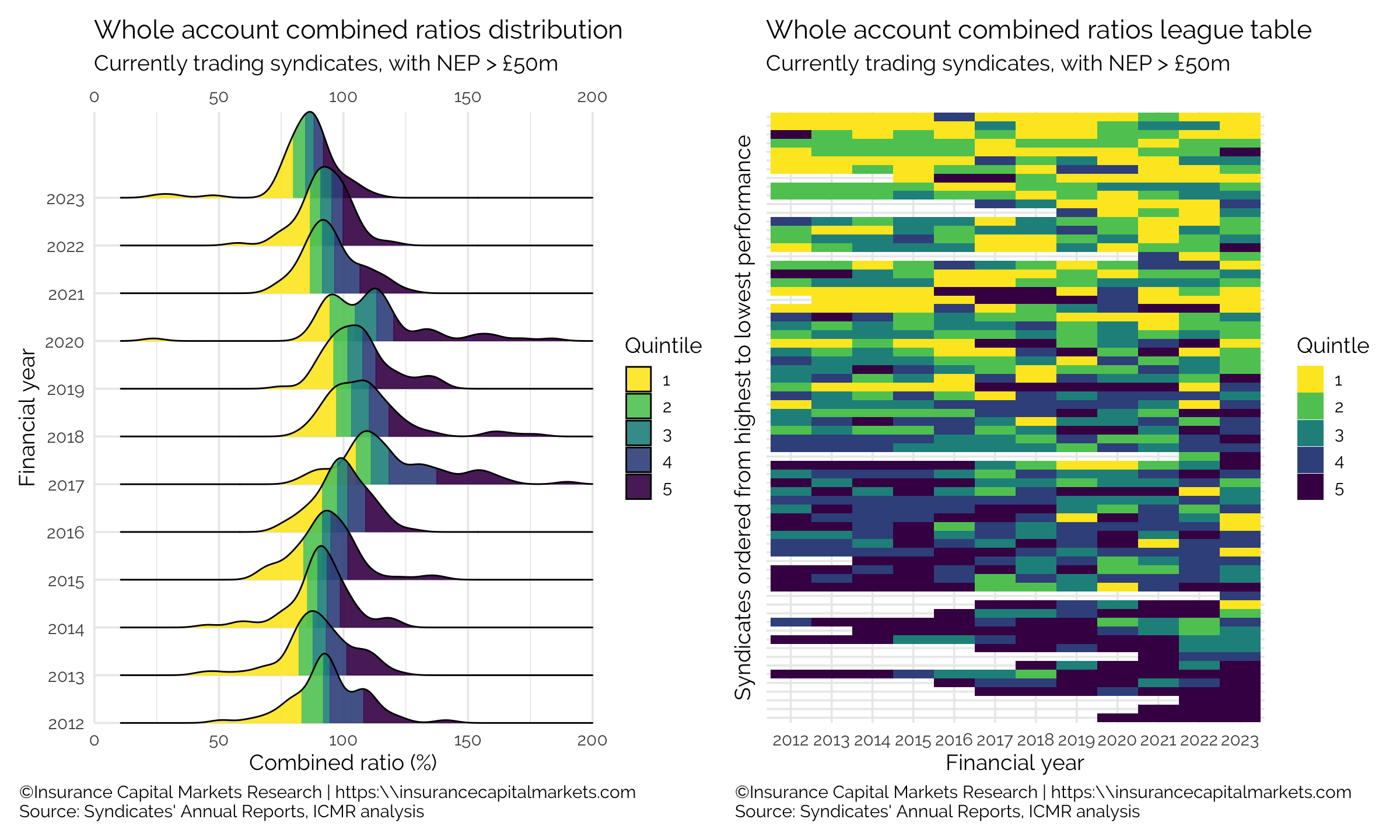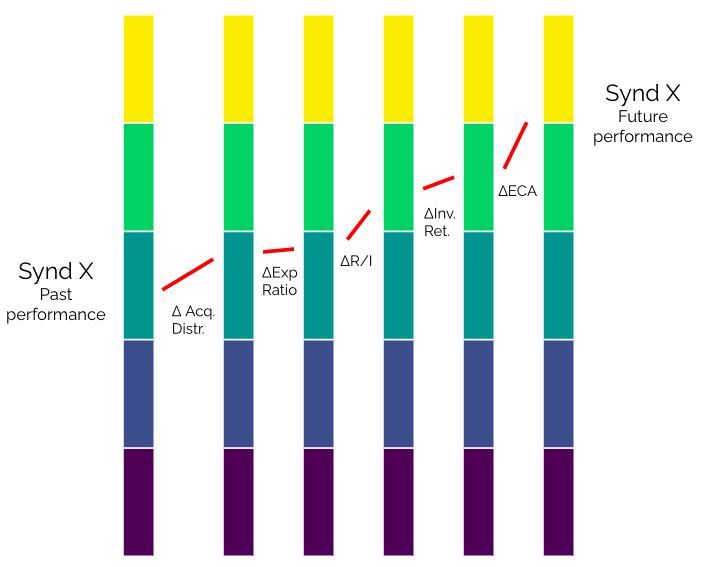Relative performance is sticky
What has been missing at Lloyd’s until now is transparent gross underwriting league tables of syndicates by line of business.
At ICMR, we have curated historical gross underwriting performance data by line of business from the notes to the financial statements.

Why do you need League tables?
- Identify syndicates to follow: League tables can help to identify syndicates that are outperforming their peers, both in the current cycle and likely in the future. This information can be used to make informed decisions about where to provide capacity.
- Identify what drives overall relative performance: League tables can help to understand the factors that contribute to a syndicate’s relative performance, e.g. which line of business and metric drives performance and does it align with the underwriting strategy?
- Model inter-syndicate rank correlation: League tables provide the insight to model the market performance in a given line of business across syndicates
- Demonstrate relative outperformance to investors and the Corporation: League tables can give the argument to convince stakeholders about future performance potential.
What are the most important levers / quick wins?
ICMR can assist in path finding the way to top quintile performance / ’light touch’ status

After all, higher relative performance is highly correlated with higher valuations. Where we see a mismatch between relative performance and valuations, we see potential opportunities for M&A.
Whatever your need; investment in Lloyd’s, preparing your business plan, identifying potential syndicates to follow contact ICMR to get a better understanding of the performance potentials.